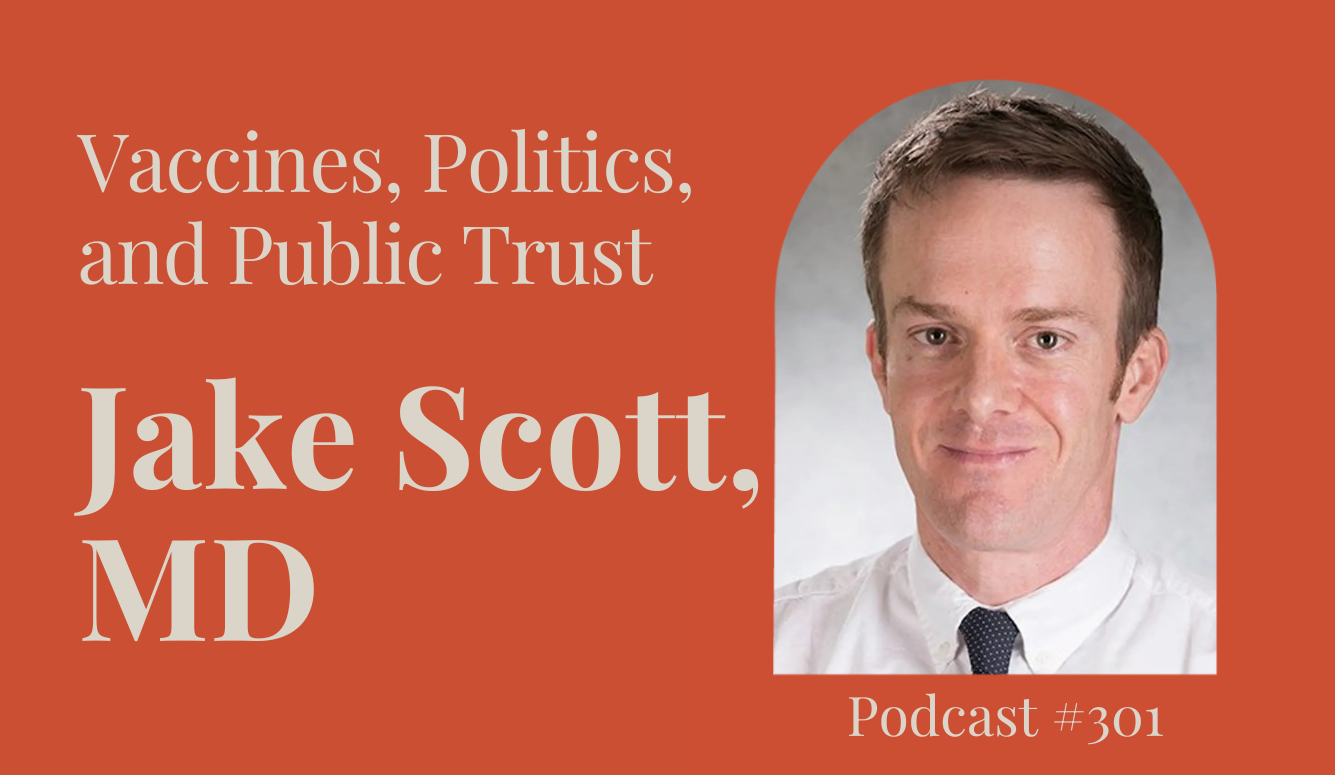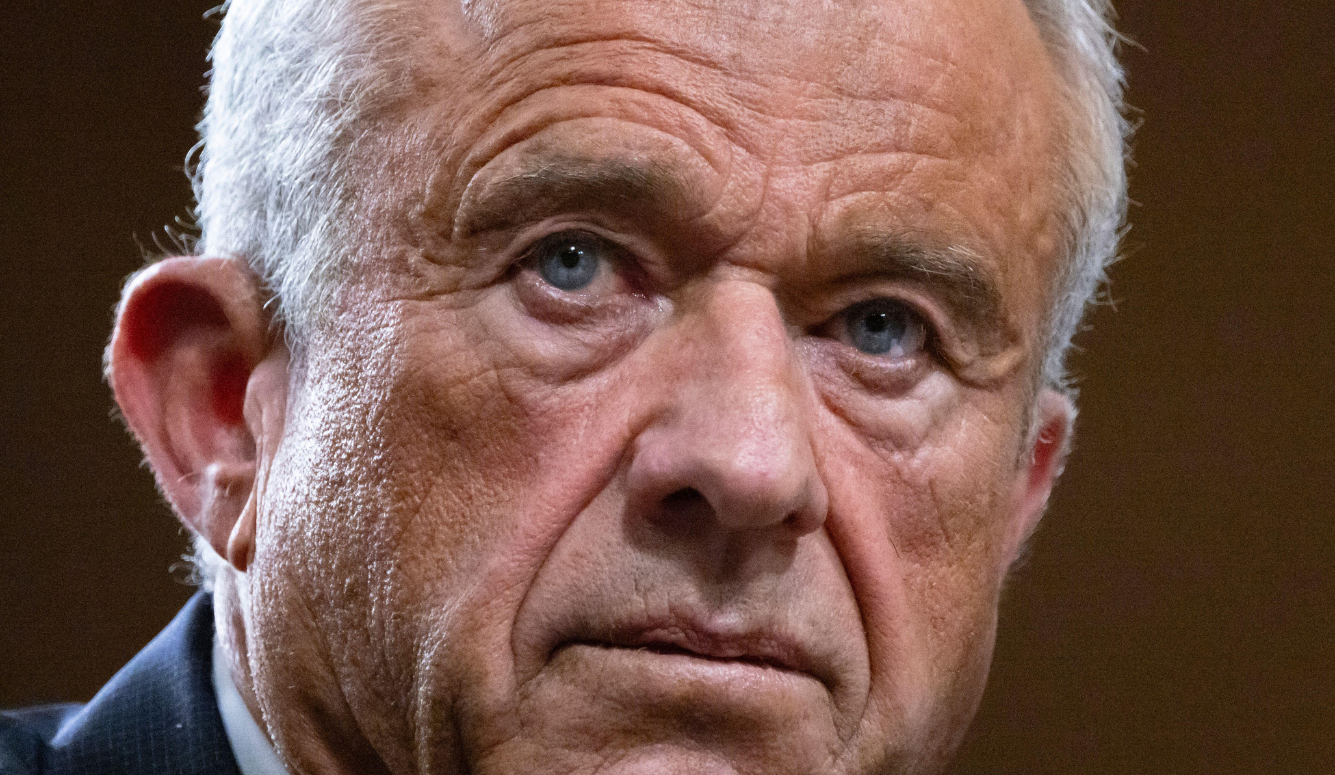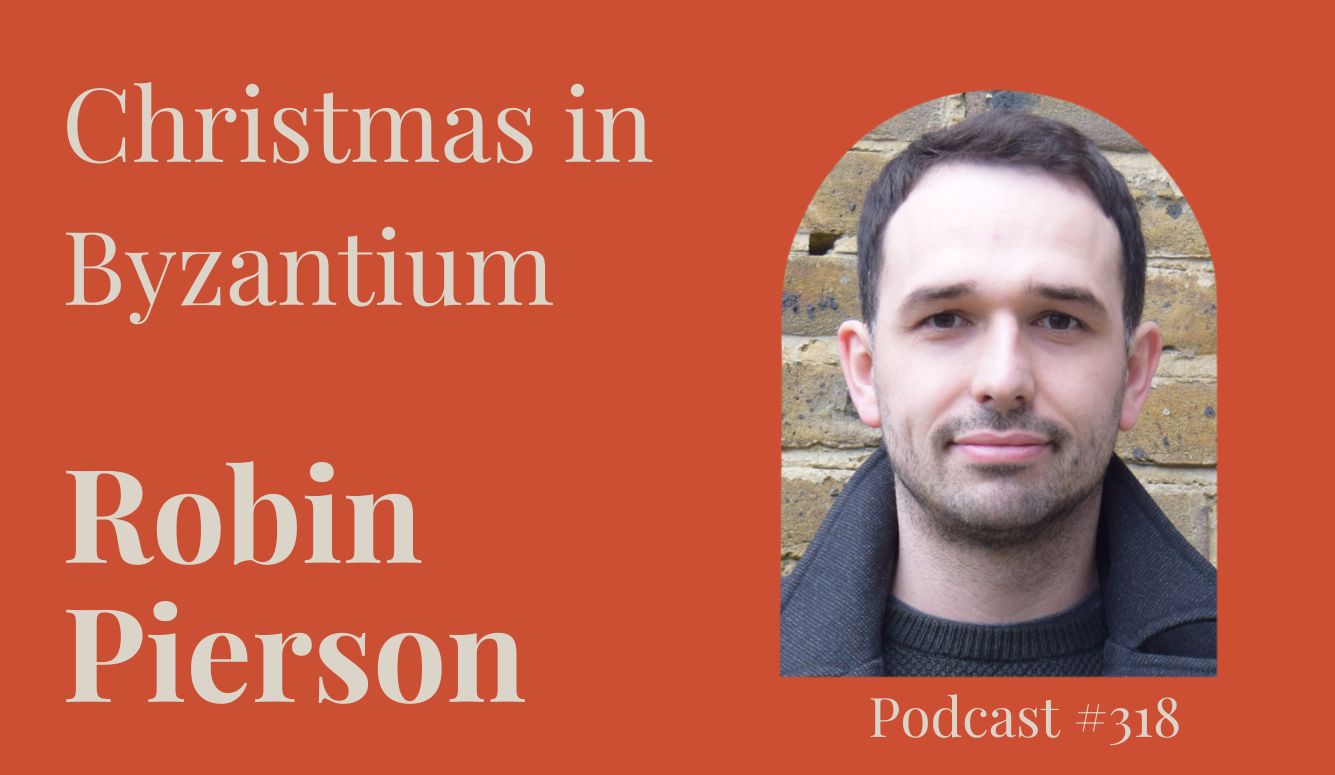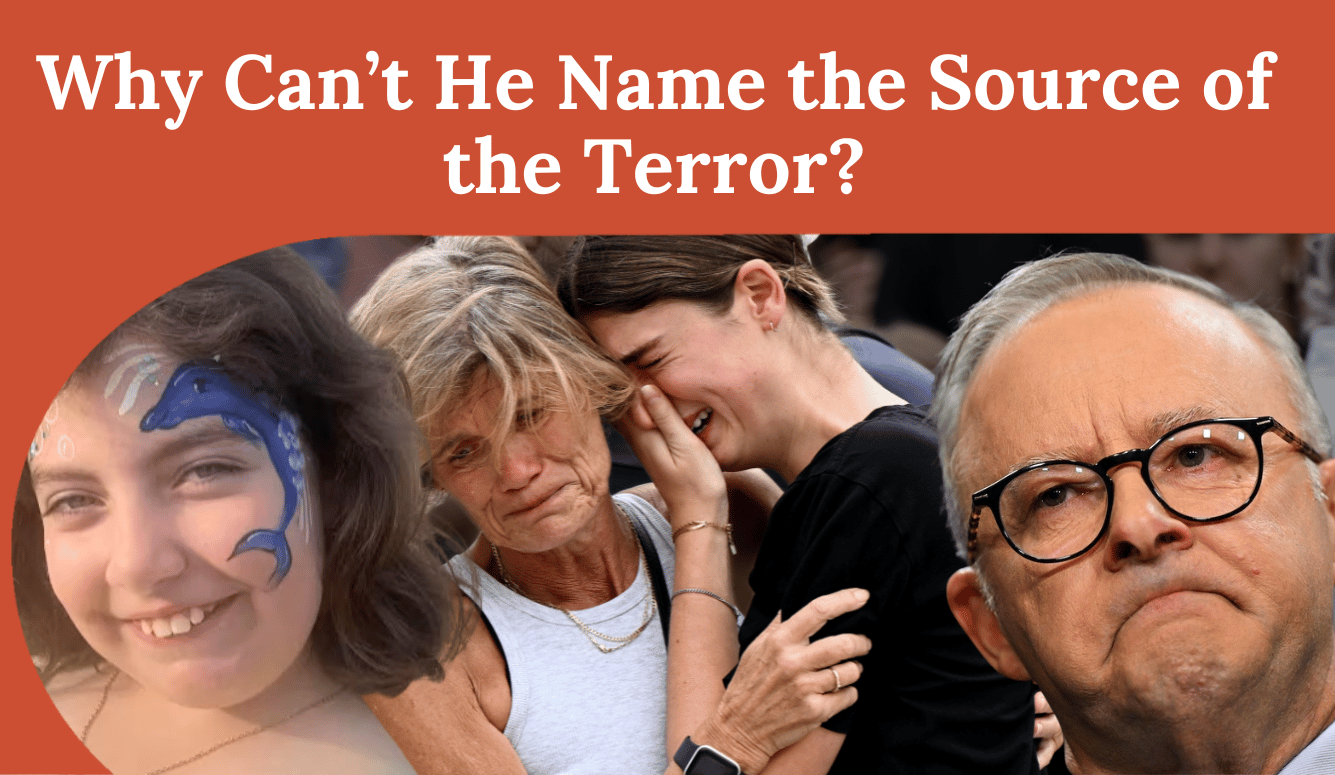Podcast
Podcast #301: Vaccines, Politics, and Public Trust — Jake Scott, MD
Quillette podcast host Jonathan Kay speaks with Stanford infectious diseases expert Jake Scott about the perils of rolling back immunisation treatments for COVID, RSV, and measles — and the misinformation spread by figures such as RFK Jr.

Introduction: Welcome to the Quillette podcast. I’m your host this week, Jonathan Kay.
And this week, we’ll be talking about a timely subject—vaccines.
I say timely because, in recent days, we’ve seen US secretary of health and human services RFK Jr. and his government allies take aggressive steps to discredit immunisation treatments that offer proven—often life-saving—benefits.
This has included revisiting the debunked idea that vaccines are linked to autism, limiting COVID vaccine availability among Americans who aren’t senior citizens, stacking advisory committees with fellow vaccine sceptics, and—in the case of one of those skeptics—raising dubious concerns about effective new immunisation treatments that have already begun to protect young children from the effects of RSV.

Meanwhile, in Florida, it was announced that state officials will end all vaccine mandates, including those governing schoolchildren—a move that experts warn could lead to severe disease outbreaks among not only Florida residents, but also many of the tourists who help drive the sunshine state’s economy.
With me to discuss this issue is Dr Jake Scott, a board-certified infectious disease physician and Clinical Associate Professor at Stanford University School of Medicine.
He is also the author of two recent articles at Quillette, titled A Baseless Attack on Groundbreaking RSV Therapies, and RFK Jr.’s mRNA Betrayal: How Political Ideology Trumped Nobel Prize-Winning Science.

Before proceeding, I should say that this is an important issue for me, as well—and for my Quillette colleagues.
As you’ve heard often in the podcast introduction that just played, Quillette exists as a haven for free thought and heterodox viewpoints. But not every viewpoint that happens to be heterodox is based on fact. When it comes to vaccine misinformation, the editors at Quillette have had many opportunities to observe how easily pseudoscience can traffic under the false banner of dissident truth-telling.
As Dr Scott admits at several points in our interview, many vaccine sceptics come by their scepticism honestly, thanks to the mistakes and evasions that have stained the record of the medical establishment in the past. But when it comes to the immunisation technologies discussed in this podcast, there is no credibly evidenced indication that they aren’t safe for the general public.
Just the opposite: COVID and MMR vaccines have each saved many millions of lives. And new RSV immunisation treatments, which came on line last year, have already helped keep thousands of babies and toddlers out of pediaetric intensive care wards.
I hope you’ll enjoy my interview with Dr Jake Scott, board-certified infectious diseases physician and Clinical Associate Professor at Stanford University School of Medicine.
Transcript
Jonathan Kay: Dr Jake Scott, thank you for joining the Quillette podcast.
Jake Scott: Thank you.
JK: Okay, so I’m going to ask you about a couple of different kinds of vaccines, and some general questions about the unprecedented politics of vaccines that now exist in the United States. But let me just start with these claims.
I feel like they’ve been around since maybe the late 1990s—claims that purport to link autism with vaccines. The claims were originally made that maybe the mercury in—I think it was the MMR vaccine, combined mumps, measles, rubella—there were some claims that that was giving rise to the spike in autism cases that people started seeing around that time. That was debunked, and I felt like that was that. But now it’s been rekindled. Is that right?
JS: Yeah, it’s complicated, but you’re right. And let me just begin by being very direct about this: there’s no link between vaccines and autism. It’s very clear. And this is not just my opinion or my judgement. It’s weird—I tweeted that literally, or posted it on X. I literally just wrote, “Vaccines do not cause autism.”
JS: And I really try to be so careful not to post anything or say anything during any interviews that isn’t totally accurate—because I’m fighting against misinformation. So it’s imperative that I be accurate myself. I totally stand behind that.
It was interesting to see how controversial that was, because it’s unequivocal that vaccines do not cause autism. It’s unequivocal. There’s no link between MMR vaccines and autism. MMR is measles, mumps, rubella.
The 1998 Wakefield paper that started this whole thing wasn’t just wrong, it was totally fraudulent. Andrew Wakefield—if I remember correctly, the study had something like an n=20.
JK: Twelve kids.
JS: Gastroenterologist Andrew Wakefield lost his medical licence for ethical violations and for data manipulation. The study involved only twelve children, it used completely unethical procedures, and the journal that published it, The Lancet, retracted it in 2010.
The reason why I think this is so important to note is because it still influences parents 25 years later. We’re dealing with the worst measles outbreak in 33 years. And it stems from this paper in 1998 that was totally fraudulent.
There was this theory that MMR vaccines had some deleterious effects on the gastrointestinal tract that were somehow pathognomonic for autism. But I just want to emphasise that this really shows you the power of misinformation. And this was before the heyday of social media. This was around the time social media started to take root—but the misinformation started in The Lancet, which is pretty incredible.
There was a large systematic review in 2020 that looked at nearly two million children in cohort studies, and something like 9,000 children in case-control studies. No association with autism.
For thimerosal specifically, there are studies of nearly a million children across multiple countries that found no relationship with autism. Thimerosal is the mercury-containing agent. But there’s an important caveat there: there’s ethyl mercury and there’s methyl mercury. The difference is that one lingers longer—that’s the one in fish—and the other is excreted more quickly. The one in thimerosal is excreted much more rapidly and doesn’t tend to linger.
The other thing that I think is the smoking gun—though I hate that expression—is that autism rates kept rising after thimerosal was removed from vaccines. And not just in the US, but all over the world. If vaccines caused autism, those rates should have dropped. That should be the mic drop right there.
JK: Right. I too have had my adventures on this subject on social media. My favourite response—I think I quote-tweeted your tweet about how vaccines don’t cause autism, and I supplied my own comment. I said, “It’s crazy to me that anybody in government is perpetuating this kind of stuff.” And one guy’s response was, “Well, if it’s not vaccines, what is it?” And that was his mic drop moment.
JS: The relationship between vaccines and autism has been one of the most thoroughly investigated medical questions of all time. And the other thing is, the clinical features don’t match either.
Going back to thimerosal and mercury: mercury poisoning causes ataxia, which is difficulty with walking and balance. It causes problems with speech and visual field defects. Autism doesn’t present that way. Even the brain pathology is the opposite. Mercury poisoning causes brain atrophy, while autism causes more enlarged brains with increased cell densities.
One doctor had an interesting observation for me. She said one reason she thinks the conspiracy theory lingers is that signs of autism often manifest themselves in a child around the same time she is administering the MMR vaccine. The vaccine timetable just happens to coincide with the developmental schedule when parents start to notice, “Hey, there’s something unusual about my kid,” and then they get that diagnosis. Coincidentally, it happens to coincide with the vaccination schedule.
So yeah, that’s a very common point people make. And I tell people, “Look, just to put things into context: autism is roughly eighty percent heritable and it develops in utero during pregnancy. The timing with vaccines reflects when symptoms become noticeable and when kids have scheduled visits. So it’s a coincidence. It’s not causation.”
JK: People often will externalise medical issues. It’s human nature—you look for a cause for things.
JS: For sure. I think there are several things going on here. First, there’s this consistent historical pattern where vaccine opposition emerges after a vaccine succeeds. We saw it with smallpox in the 1850s, pertussis in the 1970s, COVID now. Success creates its own problem. Success causes its own risks.
JK: The way I interpret that is: say with smallpox, if you don’t know anybody who has smallpox, you don’t know the agony of getting smallpox, you don’t know how horrible a disease it is. So it’s not something that enters into your brain. Is that what you mean by “success causes its own problems”?
JS: Yeah, 100 percent. Vaccines are really victims of their own success. When diseases disappear, or when they’re rendered less threatening, vaccine risks start to seem disproportionate. And it’s hard to recognise how effective they were when the disease isn’t around anymore—like with smallpox.
JK: I have friends who are COVID vaccine-sceptical. When they send me information, a lot of it starts off with: “My cousin” or “my friend’s cousin was this 28-year-old ultramarathon runner…” They’re always ultramarathon runners… “who got a vaccine or who got a treatment or some COVID therapy, and within three weeks he was dead.”
So let’s turn a little bit to the COVID stuff now. The autism–MMR vaccine link was just total nonsense. But I think it is true that in extremely, extremely, extremely rare cases, there have been adverse medical conditions or events associated with COVID vaccination. Is that right?
JS: For sure. One thing that I see a lot of is, “Well, you guys oversold COVID vaccines and said they were 100 percent safe.” I’ve never told any patient or anyone in the public that anything is 100 percent safe. I mean, ibuprofen isn’t 100 percent safe.
Are the COVID vaccines 100 percent safe? No. Are they generally very safe? Yes.
And the other thing is, when people ask about the state of science and safety with COVID vaccines, I start with the scale. We’ve administered over thirteen billion doses globally, with extensive real-time monitoring. There’s this fear that we’re hiding a lot of data. We’re not.
This includes doses of mRNA vaccines and also the AstraZeneca vaccine, which is not mRNA-based. So all doses of all COVID vaccines. We’ve administered over thirteen billion doses globally. That’s massive, right?
JK: That’s twice the world’s population growth. It’s unbelievable.
JS: And it’s remarkable how well the safety monitoring has worked. Has it been perfect or flawless? No. Was the messaging perfect? Absolutely not. I took a lot of issue during 2020 and 2021 with the messaging not being as nuanced, transparent, and contextualised as it could have been. But it was also a rapidly evolving crisis.
With COVID, because of the nature of the disease, it was very deadly for people in their eighties and seventies. Very dangerous for people in their sixties, maybe less so but still dangerous in their fifties. Once you got down to the twenties and thirties, COVID itself rarely led to fatalities.
JK: In my mind, the main argument for an eighteen-year-old getting vaccinated was so that you don’t give it to your grandfather, your father, or somebody else who’s older. Is there any truth to the idea that—putting aside the danger of contagion and transmitting the disease to others, which is a significant danger—if you’re an otherwise healthy twenty-year-old, the risks are comparable to the benefits?
JS: It’s a very good question. Let me say: in 2020 and 2021, I was seeing patients. I was doing some research on the side, I was involved in some COVID clinical trials, but I was so busy seeing patients—COVID patients in particular. I saw hundreds and hundreds of COVID patients, literally, and I lost well over a hundred.
And they weren’t all in their seventies and eighties. I distinctly recall—my colleagues also said this, and some of them aren’t necessarily big COVID vaccine cheerleaders either—that there’s a misconception that COVID in 2020 and 2021 didn’t really cause harm amongst younger adults. It did.
I distinctly remember losing a patient in his thirties. He and his mum were both hospitalised. His mum survived, and he didn’t. And most people would say, “Oh, he was probably obese and had diabetes.” Well, no—not really. If you saw him at Trader Joe’s, you wouldn’t think, “That guy’s unhealthy.” Not at all. And that’s just one of many examples.
So back then, in 2020 and 2021, before the primary vaccine series was available, people were dying in their twenties, thirties, forties. Were there eighteen-year-old athletes, ultramarathon runners? Maybe not. But that’s not to say the risk didn’t exist.
And it’s always a matter of weighing risks versus benefits. With the first two doses, the primary series, what really were the risks? Well, they were really, really low, especially for adults thirty and up.
Boosters—that’s a different subject. Do healthy men, especially since myocarditis is most strongly associated with men, necessarily need a booster every year? No. I’ll be honest. I’ve been saying that from day one.
JK: And the condition you just described is a heart condition, yes?
JS: Yes. Myocarditis refers to inflammation of the heart. The highest risk is in young males after the second dose, but most cases are mild and resolve with full recovery.
The risk was higher earlier in the pandemic, and that may have been related to the immune system being more naïve back then. It’s complicated. But these days, the data are clear: the risk of myocarditis has significantly decreased.
I’m involved in a systematic review looking at the last two years of data. Our review found that the rate is fairly consistently around two per 100,000 doses. That’s 0.002 percent. There have been very few fatalities directly attributable to COVID vaccines. In the US, there have been none.
JK: Wait, say that again. The only way I’ve ever heard of myocarditis—if I’m pronouncing it correctly—was in the context of people talking about it as a risk associated with COVID vaccines. But for all the talk, you’re saying there have been no fatalities associated with myocarditis due to COVID vaccine administration?
JS: Let me clarify. Myocarditis has been around forever. I’d seen several cases of myocarditis caused by infections before COVID vaccines were available. As an infectious disease doctor, I’d probably see a few cases a year, often triggered by different viruses: influenza, COVID itself.
So in the US, the last I heard, there had not been any deaths attributed to the COVID vaccine. In other countries there have been—New Zealand, Korea—not a lot, but some. I’m not saying it’s not possible. The Korean study had the highest rates.
JK: Let’s talk a bit about mRNA technology. If I remember correctly, you had the AstraZeneca vaccine, which wasn’t based on mRNA technology. But mRNA sounds scary. As a layperson, it’s been explained to me as your body’s email system, transmitting information. It literally stands for messenger.
It’s not hard for me as a layperson to think, “If you’re messing around with the communication systems of your body, you can encode anything. You can tell your body to do all sorts of horrible things.” You can see why mRNA technology can be scary to people, right?
JS: So, mRNA technology isn’t actually new in terms of vaccine research. It’s been studied for decades. What was new was using it for a pandemic vaccine.
Think of mRNA—messenger ribonucleic acid—as basically a recipe or instruction manual. Your cells are like little factories, and mRNA is the instruction sheet that tells them what to make.
With COVID vaccines, we give your cells the instructions to make just one piece of the coronavirus: the spike protein. It’s like showing your immune system a mugshot of the virus so it can recognise and fight the real thing later, when your body inevitably encounters it.
JK: And the spike protein is what attaches to the surface of the host?
JS: Yes. Your cells make this spike protein for a short time. Your immune system sees it, says “This doesn’t belong here,” and then builds defences against it.
The beautiful thing about mRNA as a technology is that it’s naturally temporary. RNA is inherently unstable; your cells break it down within days. It doesn’t hang around.
And it does not change your DNA. I’ve had to say that a million times, but it’s impossible. It doesn’t integrate into anything permanent, because DNA is in your nucleus, and mRNA cannot penetrate the walls of the nucleus.
It does not change your DNA. And for that reason, it’s not genetic therapy. mRNA vaccines are not gene therapies. It’s just a temporary instruction that gets your immune system trained. And then it disappears.
JK: I guess as a conspiracy theorist, I think, well, once you’re giving instructions, even if they’re temporary instructions, I can see how people’s imaginations would run away with them. Let me put it this way. For at least a generation, we’ve all been trained in the dangers that malware can do to our computers. Whole Hollywood movies are based on computer viruses.
The COVID virus itself is—well, viruses themselves barely constitute life forms. It’s essentially just information. So information can do a lot of damage. It’s not like it’s something we haven’t seen before. There are, you know, tons of different mRNA molecules floating around in our cells at any given time.
I think I learned this from your article—that within, I don’t know, a couple of hours or a couple of days of identifying the virus that causes COVID, they already had programmed in the mRNA structure. After that, it was just a question of clinical trials and developing a delivery mechanism. But because it’s information, unlike maybe traditional vaccines where you have to use eggs and all this stuff to incubate things, this was designed in very short order, right?
JS: Yeah. Yeah. That’s the thing. I think it’s really cool. The reason why mRNA vaccines could be updated so quickly for new variants and developed so quickly for this novel coronavirus is because, instead of growing viruses in eggs like we do for flu vaccines, we just had to tweak the genetic sequence and manufacture new instructions. So it’s just like updating software instead of rebuilding hardware.
The lipid nanoparticles that deliver the mRNA are essentially just fat bubbles that protect the fragile RNA—because it’s inherently unstable—and help it get into cells. Once they’ve done their job, they’re broken down too. So it really is benign.
JK: What about this argument? And I hear this all the time. I have a group of friends I visit every year. We have so many common interests that we don’t let this kind of stuff get in the way, but they have a lot of views I regard as weird when it comes to vaccines. One argument that comes up a lot is: “Well, it’s not really a vaccine because it’s not a hundred percent effective.”
Have you heard that argument—that the word “vaccine” is a misnomer for any therapy that doesn’t give you a hundred percent protection? Like, the smallpox vaccine does give a hundred percent protection against smallpox. But, you know, the flu is thirty per cent. COVID, it’s more—I don’t know—fifty, seventy, eight percent. Have you heard that argument? And how do you respond?
JS: Oh, I’ve spent countless hours trying to counter this from the very beginning of the advent of the COVID vaccine. But I never heard that argument with the flu shot—even though the flu shot, I mean, some years is like twenty percent, or something even lower.
So here’s the thing. When it comes to the effectiveness of the COVID vaccine, the messaging has been very problematic. My focus on social media in 2020, 2021 was actually on this. It wasn’t on pushing back against vaccine sceptics; it was trying to clarify this.
If you think about it: when you get a shot in your arm, the idea that that shot could then block any respiratory virus from entering your body is ridiculous. Same with the flu vaccine. Same with RSV. The goal should have been very clearly stated from the outset: the goal is to prevent serious illness that causes hospitalisation and death. Because it’s a respiratory vaccine.
And by that metric, they’ve been phenomenally successful. So the idea that COVID vaccines—well, it’s given a lot of fodder to folks who are opposed to them. COVID vaccines should not be expected to prevent infection or transmission. Do they help reduce the risk of infection and transmission? Early on, before there were mutations, sure—there was clearly evidence that they helped reduce the risk of infection and transmission.
But as it mutated, as most of us expected—Paul Offit was saying this from day one, I was saying this from day one—the vaccines should not have been expected to prevent infection. Otherwise, it was a recipe for disappointment. And then the term “breakthrough infection”—that just drove me absolutely crazy. That term was used to describe infections in people who had been vaccinated. But it signals like a dam bursting, right? As though there was a cataclysm.
Honestly, that caused so much damage. There was that notorious outbreak in New England where everyone who got COVID had been vaccinated. Everyone said: “Oh God, the vaccines don’t work at all. You said they were 100 percent effective—or 95 percent effective.”
Well, they’re not great at preventing infection. But it doesn’t really matter—or it shouldn’t matter.
JK: Sure. Being sick sucks, right?
JS: Yeah.
JK: But if your body’s primed to fight it and it reacts more quickly, and the viral load is lower, you’re going to have better outcomes.
JS: Yeah, exactly. It works incredibly well at preventing hospitalisation and death. Incredibly well. It works better than the flu vaccine on that metric. But you just can’t really expect a respiratory virus vaccine to prevent a respiratory virus from entering your nose and airway. It doesn’t put up a magic force field.
JS: My next question isn’t actually related to vaccines, but it’s a COVID-related question that I was hoping to get your opinion on—and I think a lot of my listeners would be interested. Long COVID.
We haven’t heard a lot about it lately. The idea of long COVID was extremely credible to me at first, because you talk about these people having scar tissue in their lungs. Even people who survive COVID, their whole respiratory system was traumatised by the experience.
I had COVID after I’d been vaccinated, and I couldn’t bike up a hill for six weeks, despite the fact that I wasn’t hospitalised. I remember thinking: wow. This is a really serious thing. But I was vaccinated and I didn’t have what I thought was an especially serious case. Still, the effects lingered—unlike a regular flu or cold.
So in those first six months or a year, the idea of long COVID made sense. It started making less sense to me maybe later on—when people were vaccinated and the cases were milder. I think there was one study I saw that said something like twenty percent of people who said they had long COVID actually showed, in tests, that they’d never even had COVID in the first place.
What is your take on long COVID? Is it a real thing?
JS: I’ve actually been involved in an NIH-sponsored long COVID study—the RECOVER trial and the RECOVER study. Yeah, long COVID is real. But I think we need to be more precise about what we mean by it and how we study it. The condition exists.
People have had persistent symptoms after SARS-CoV-2 infection—that’s what we call COVID—that can’t be explained by other causes. We see fatigue, brain fog, exercise intolerance, and other symptoms that can genuinely be debilitating for some patients.
But here’s where it gets complicated. First, the definition has been inconsistent across studies—some use symptoms lasting four weeks, others twelve weeks, others six months. Second, we don’t have great biomarkers or objective tests for most long COVID symptoms. So we’re often reliant on subjective reports, which are obviously problematic.
Third, many long COVID studies lack proper control groups. They don’t compare to people who had other respiratory illnesses, or account for the massive psychological and social disruption of the pandemic itself. So it’s very complicated.
What we do know is that vaccination reduces the risk of long COVID. Multiple studies show that “breakthrough infections”—though I hate that term—in vaccinated people are associated with fewer symptoms, shorter duration, and a lower likelihood of persistent symptoms compared to infections in unvaccinated people.
The mechanistic understanding is still evolving. I’m involved in this study. It could be viral persistence, autoimmune processes, micro-clotting, autonomic dysfunction—there are probably multiple mechanisms in different patients. But it is real. People are clearly suffering from it. I’ve seen a number of patients.
I’m sure we all know some people who were high-functioning—athletes, for example—who then developed chronic fatigue, exercise intolerance, and all this. It’s real.
And I think it’s very important not to dismiss it. The important message is that we take patients seriously, we take their symptoms seriously, and we work them up appropriately. We do the necessary investigations. But we also need rigorous research with proper controls to understand what we’re actually dealing with.
The good news is that most people do recover. And I think we’re getting better and better data. Some of the early long COVID research wasn’t as methodologically sound as it should have been, so it’s harder to separate signal from noise in those cases. But it is getting better.
The other thing I’ll say is that there are a number of other infectious diseases that have been associated with chronic fatigue syndrome—or ME/CFS—throughout history. Tick-borne diseases, Epstein-Barr virus, for example. So I think this is a really good opportunity to learn more about these types of syndromes. Lots more to learn, but yeah, it’s real.
JK: Before I let you go, I want to talk about RSV, which is also a respiratory infection. Thankfully not nearly as fatal as COVID, but it has the scary quality of afflicting very young people. Babies and toddlers can get very bad cases of RSV.
Your first article for Quillette was about RSV, and I learned a lot from working on that article. One thing that was interesting was how you explained that we actually have some groundbreaking treatments for RSV. One is what, as I understand, is an actual vaccine for the mother. But we also have treatments for the children when they’re extremely young, to help prevent them from getting RSV or to mitigate the symptoms if they do get it.
But terminology is important here. In your article, you made the distinction between those vaccines and antibody treatments. As I understand it, when we’re trying to protect children from RSV, we’re giving them antibody treatments. If I’m getting the terminology right, can you explain the difference?
JS: You’re right. The paediatric preventative therapies are not technically vaccines.
I’ve seen some media news articles actually refer to them as vaccines. So to a lay person, it seems that way. You can call them immunisations. I’m working on this review article right now and it covers COVID, flu, and RSV. And instead of saying vaccines, we’re saying immunisations. That’s the generic term for these preventative treatments.
These are long-acting monoclonal antibodies. They’re not traditional vaccines, but functionally they provide months of protection with a single dose. And we use this approach in kids because direct vaccination of very young infants for RSV has been challenging. Their immune systems don’t respond as robustly.
I think this is an important chance to recognise that the history of vaccine research has not always been rosy. In the 1960s, there was an RSV vaccine that was a disaster. It didn’t just fail—it actually enhanced disease. It was tragic, and it led to today’s rigorous safety protocols.
RSV is the leading cause of infant hospitalisation for respiratory illness worldwide. Fortunately it does not cause many fatalities. For that reason, I’ve heard people say, “Well, since it doesn’t kill you, let’s not vaccinate kids.” But I’ve got two kids. When my son was born, he had to go to the NICU because he was having significant respiratory issues, and it was awful. It was the most traumatic experience of my life to have your newborn struggle to breathe and potentially die, or be gravely or critically ill. It’s terrifying.
My firstborn had a subglottal haemangioma, which, as you probably know, obstructs the airway. It’s like a benign tumour that blocks the airway. She was in the ICU. She’s in college now, but I wouldn’t wish that experience on anyone.
It’s awful. My son has asthma, probably as a result, and some ongoing respiratory issues. In the US, RSV causes about 150,000 infant hospitalisations a year. But this past season—it’s crazy this isn’t more widely publicised—so the 2024–2025 season was the first time we had effective prevention tools for RSV. And the results have been incredible.
Real-world data shows there was a 30–40 percent reduction in RSV hospitalisations overall, and about a 50 percent reduction in newborns under two months old. We’re also looking at this in our systematic review, and multiple studies now—I think up to a dozen—show about 63–89 percent effectiveness.
And of course, the most expensive part of your hospital is the paediatric ICU. So putting aside the humanitarian aspects, the resources freed up are enormous for other patients with other conditions.
Yeah, there’s Nirsevimab and Clostoroivumab, which are the long-acting monoclonals for kids.
JK: And you wrote about it in the context of somebody—now we’re getting to the political angle—somebody in a position of authority casting doubt on these treatments.
JS: Yeah, more than that. It was Dr Robert Malone, who refers to himself as the original inventor of mRNA. There was a New York Times article about that—anyone interested can read it, that’s a whole other story. The Times had an interesting piece on those strange claims.
JK: Tell us about the body that he’s been appointed to, because it sounds like it’s highly influential. One of the quirks of the story is that he voted for the RSV treatment to be approved, but then later recanted. Can you tell us about this body?
JS: It’s the CDC’s advisory committee—ACIP, the Advisory Committee on Immunisation Practices. What they do is review all the evidence and then make recommendations to the CDC. It’s not binding, but the CDC director and the FDA both take those recommendations into account.
JK: And whose decision was it to appoint him to that board?
JS: Well, Robert F. Kennedy Jr fired the seventeen ACIP members who had been long-time public servants—a few of them I know and work with at Stanford. All seventeen were dismissed for no justifiable reason. He claimed there were conflicts of interest, which was total nonsense. Then he handpicked his own members, including Malone.
JK: So he fired all seventeen?
JS: Yep. Including Dr Robert Malone, who has made some outrageous claims about vaccine safety. When it comes to RSV, Malone and Dr Yaffa Shiraz claimed that the CDC manipulated data about the safety of the RSV monoclonal antibody approved for kids—Nirsevimab in particular.
This case really illustrates how misinformation can emerge from within advisory systems. They made three fundamental errors: they inappropriately pooled age groups that should have been analysed separately; they ignored that every death in clinical trials was reviewed by the FDA and none were attributed to the antibodies; and they drew statistical conclusions that were meaningless.
JK: Does Kennedy appeal to mainstream Republican sentiment? Even in red states it seems the vast majority of people get their kids vaccinated. As a Canadian, it’s not clear to me how Kennedy is popular. On Twitter he seems popular, but how does this happen in a G7 country?
JS: I think he taps into real and understandable concerns. Trust in institutions has been declining—not just health agencies but government, media, corporations. People feel misled about various things over the years. That creates an opening for someone who positions himself as challenging the establishment.
And I had issues with aspects of the pandemic response. In California, schools were closed for too long. Playgrounds were shut, swings were removed, and I had two toddlers. There were absurd things.
JK: In Ottawa, they even banned walking by an old-age home to wave at relatives through the window. That was bizarre.
JS: Exactly. In LA, they filled in skate parks with sand, and banned the beach. There were a lot of things like that I’d have done differently. But it was a rapidly evolving crisis, and I think many were trying their best.
Still, I understand why people felt misled and saw overreach. That created an opening for Kennedy, who is very comfortable challenging the establishment. And the pharmaceutical industry does have real conflicts of interest. Drug companies have handled crises like the opioid epidemic terribly, which creates legitimate scepticism.
And I think Kennedy taps into people’s desire for autonomy and control over their own health decisions. I understand that.
JK: Here in Canada, the biggest pushback to vaccines came where they were required. We had these truckers occupy central Ottawa. The policy was that to be a cross-border trucker you had to be vaccinated—to cross into the US and back. It was a mandate. That pushed them over the line. Some were conspiracy theorists, but not all. Some were just civil libertarians.
My theory is that from the start, the policy should have been: “We’ll charge you twenty bucks for the vaccine, but today it’s five. Oh, it’s Thursday, it’s free.” Make people feel they’re getting something of value. Because the COVID vaccines were one of the greatest breakthroughs in medical history. But as soon as you say it’s compulsory, people put it in the box of government rules rather than seeing it as a miracle drug.
JS: Yeah. When I was in Florida, at Aventura Mall in Miami, they had a stall set up, literally begging people to get vaccinated. This was late 2021 or 2022. And I saw the way people responded—“Stop bugging me.” But they weren’t bugging them; they were offering an incredible medical miracle. And people said no because it would take four minutes away from shopping.
I get your point. Mandates are complex.
JK: Did Stanford have a mandate for students and faculty?
JS: Yes.
JK: And what did you think of that?
JS: I have mixed thoughts. The data are clear: mandates do work in the short term to raise vaccination rates. But they also backfire on public perception, and they’ve definitely harmed confidence in COVID vaccines.
If you look historically: in the 1800s, compulsory vaccination laws—literally vaccinating people against their will—often backfired. They increased opposition and were repealed in several states. Heavy-handed approaches can cause more resistance than compliance.
It’s important to distinguish mandatory vaccination, where there are consequences for not vaccinating, from compulsory vaccination, where it’s forced. Most modern mandates are requirements with exemptions.
At Stanford, I was on the Vaccine Advisory Committee. We had to review exemption cases, and it was difficult—the data were less clear then. We were trying to protect patients, staff, and the vulnerable. From a public health perspective, mandates can make sense when you’re dealing with highly contagious diseases with serious consequences, especially in schools. But they must be implemented thoughtfully.
JK: That’s why I thought maybe charge $5, then say, “It’s free today.” People love a bargain.
JS: Maybe. But I don’t like the idea of charging for vaccines. I think people should…
JK: You’d never actually collect the money—you’d always discount it. But yes, maybe people would catch on.
By the way, some of my biggest anti-vax friends in the US still got vaccinated because of work. One works for a defence contractor, and Pentagon rules required it. He just did it to keep his job. Despite all the rhetoric, once the decision was made, he shrugged and did it. Though some bitterness lingers.
JS: For sure. And I get it. The goal should be building confidence through transparent communication, addressing concerns honestly and thoughtfully.
JK: In your first article, you wrote about the first smallpox vaccine. Those pioneers built trust by giving it to their own kids, which is unethical now, but powerful. Like the guy at the World’s Fair who rode the first Ferris wheel with his family to prove it was safe. Maybe it would be weird for doctors to inject themselves on TV—although we did see politicians rolling up their sleeves. Was that useful?
JS: I don’t know. Maybe it backfired. Some people were criticised for posting selfies of getting vaccinated. I didn’t like that either—it looked preachy. There’s no one-size-fits-all answer. You can’t please everyone.
Mandates might be necessary as a last resort in some cases, but they’re risky for long-term vaccine confidence. Forcing anything—especially by government—is dangerous. Americans, in particular, resist that.
It should be the last resort. And instead of chasing things that are already debunked—like whether mRNA is gene therapy—advisory committees should be studying mandates, what worked, what didn’t, and what could have been done differently. Because this is psychological as much as virological. It’s also a marketing challenge.
JK: Dr Jake Scott, thank you so much for joining the Quillette Podcast.
JS: Thank you for having me.






